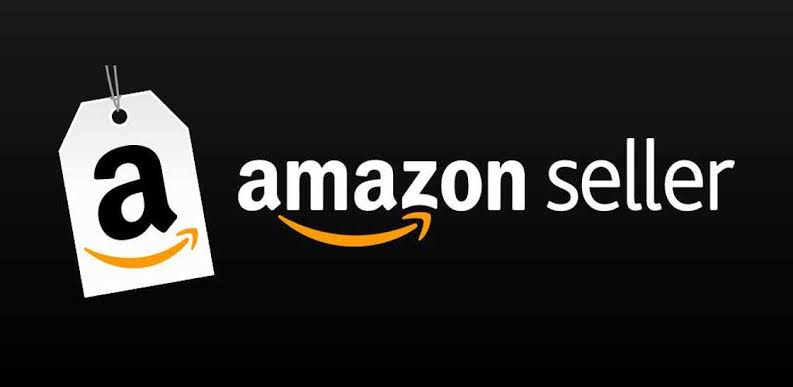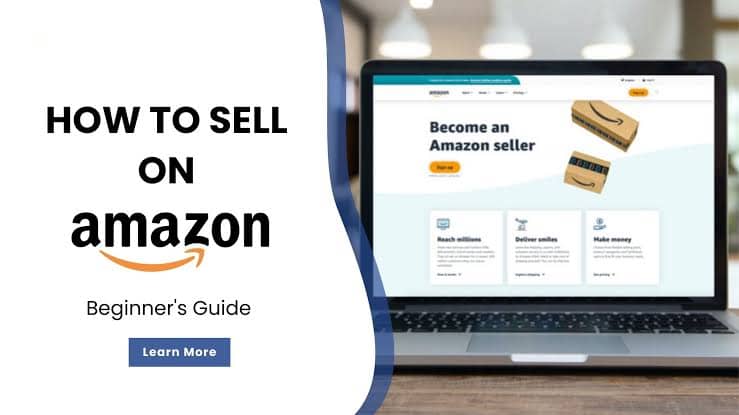Becoming an Amazon seller opens the door to a vast marketplace where millions of customers are actively searching for products. As one of the largest e-commerce platforms in the world, Amazon provides sellers with the tools and resources needed to reach a global audience, manage their products, and streamline sales processes.
To begin selling on Amazon, the first essential step is setting up a seller account. This account acts as the foundation for your business on the platform, offering you access to various features that will enable you to manage orders, track inventory, and communicate with customers effectively.
To get started as an Amazon seller, you first need to navigate to the Amazon Seller Central website. This site is where you will register your account, manage listings, handle transactions, and access Amazon’s selling tools.
The process begins with selecting the type of seller account that best suits your business needs. Amazon offers two primary account types: Individual and Professional. The Individual account is ideal for those who plan to sell fewer than 40 items per month and are looking for a simpler, lower-cost option.
On the other hand, the Professional account is best suited for those who plan to sell more than 40 items per month and are seeking additional features, such as advanced reporting and the ability to create advertisements.
While the Individual account does not incur a monthly subscription fee, sellers are charged a per-item fee for each sale. Conversely, the Professional account carries a monthly subscription fee but eliminates the per-item fee, making it more cost-effective for high-volume sellers.
Once you have selected the appropriate account type, the next step is to provide the necessary details to complete your registration. This includes your business name, contact information, and tax identification details.
You will also need to verify your identity by submitting documentation such as a government-issued ID or business registration papers. This step is crucial to ensure that Amazon complies with legal and tax regulations and provides a secure marketplace for both buyers and sellers.
As part of the account setup process, you will be asked to provide a payment method. Amazon requires sellers to have a valid credit card or bank account to facilitate payments for fees and commissions. In addition, you will need to enter your bank account details, which Amazon uses to deposit proceeds from your sales.
It is important to ensure that this information is accurate, as it is directly linked to your ability to receive payments and manage your financial transactions on the platform. After your basic information has been entered and verified, you will be required to list the products you intend to sell.
If you are selling products that are already available on Amazon, you can simply match your products to existing listings using their unique identifiers, such as the International Standard Book Number (ISBN) for books or the Universal Product Code (UPC) for other goods.
For new products, you will need to create a new listing by providing detailed product descriptions, including titles, bullet points, and images. High-quality product images and detailed descriptions are essential for attracting customers and providing them with the necessary information to make purchasing decisions.
It is also vital to categorize your products accurately to ensure they are discoverable by customers using the Amazon search function. Once your account and product listings are set up, you can start managing your inventory.
This involves determining how you will fulfill orders—whether through Amazon’s Fulfillment by Amazon (FBA) service or by handling fulfillment yourself, known as Fulfillment by Merchant (FBM). With FBA, Amazon stores your inventory in its warehouses, picks, packs, and ships your products directly to customers.
This service also provides customer service and returns management. FBA is a popular choice for sellers who want to scale their operations without worrying about logistics, as it allows them to focus on sourcing and marketing their products.
On the other hand, FBM gives sellers more control over their inventory and shipping, allowing them to manage their fulfillment processes independently. After setting up your seller account and inventory, the next crucial step is to optimize your product listings.
Amazon’s search engine is one of the most advanced in the world, but it relies heavily on the relevance of your product listings to customers’ search queries. Using the right keywords in your product titles, descriptions, and backend search terms can significantly improve your chances of appearing in relevant search results.
It is essential to conduct keyword research to identify high-volume search terms that align with your products. Tools like Amazon’s own Keyword Tool and third-party software can help you uncover the most effective keywords for your listings.
Additionally, you must ensure that your product listings are optimized for conversion. This includes offering competitive prices, ensuring your product descriptions are clear and compelling, and providing high-quality images that accurately represent the product.
Positive customer reviews also play a critical role in your product’s success. Encouraging customers to leave feedback and responding promptly to customer inquiries can help build trust and improve your seller rating on Amazon.
Managing your Amazon seller account also involves regularly monitoring performance metrics and taking steps to improve your sales. Amazon provides various reports and tools to help you track your sales, customer satisfaction, and inventory levels.
Staying on top of these metrics is crucial for understanding what works and what doesn’t in your business. For instance, analyzing your sales data can help you identify top-performing products, while reviewing customer feedback can highlight areas where your listings or customer service may need improvement.
To maximize success on Amazon, sellers should also consider leveraging Amazon’s advertising tools. Amazon offers several advertising options, such as Sponsored Products and Sponsored Brands, to help sellers increase the visibility of their products and reach a broader audience.
These tools enable sellers to bid on keywords and have their products displayed prominently in search results and on product detail pages. Advertising on Amazon can be an effective way to drive traffic to your listings and boost sales, especially when you are just starting out or looking to promote new products.
Read Also: How to Access Amazon Video and Enjoy Unlimited Streaming
Navigating Amazon Seller’s Platform: Key Features and Tools

Navigating the Amazon seller platform effectively is crucial for any seller looking to succeed in one of the world’s largest e-commerce ecosystems. Amazon seller central offers a variety of features and tools designed to streamline the selling process, from product listing to order management and customer interaction.
Understanding these key features will help sellers optimize their operations, improve visibility, and drive growth in their Amazon business. Below are the key features and tools available on the Amazon seller platform.
1. Product Listings Management: One of the primary functions of the Amazon seller platform is the ability to manage product listings. This includes creating new listings, editing existing ones, and optimizing them for visibility in search results. Sellers can list products individually or in bulk, depending on their inventory size.
Amazon provides a structured format for product information, including titles, descriptions, images, prices, and more. Sellers should ensure that their listings are complete and accurate to improve discoverability and enhance the customer experience.
In addition, it is crucial to optimize listings using relevant keywords, as Amazon’s search engine relies heavily on these for ranking products in search results.
2. Inventory Management: Amazon sellers can track and manage their inventory in real-time through the platform’s inventory management tools.
This feature allows sellers to monitor stock levels, receive notifications when inventory is low, and update product quantities. Inventory management is vital to ensure that a seller’s products remain available to customers and to prevent overselling.
Amazon also provides the ability to manage inventory across multiple fulfillment channels, such as Fulfillment by Amazon (FBA) or Fulfillment by Merchant (FBM). FBA sellers can track their inventory stored in Amazon’s warehouses, while FBM sellers can manage their own stock.
3. Order Management: The order management feature on the Amazon seller platform allows sellers to track and fulfill customer orders. Through the “Manage Orders” section, sellers can view recent orders, process cancellations, and handle returns or refunds.
Amazon’s platform enables sellers to quickly identify which orders are pending, which have been shipped, and which require customer support. For those using Fulfillment by Amazon (FBA), the order management system automatically handles the shipping process, including packaging and delivery.
Sellers can also communicate directly with customers through the order management system to address concerns or answer questions.
4. Customer Feedback and Reviews: Amazon places significant importance on customer feedback, as reviews and ratings are an essential part of the buying decision process. Sellers have the ability to view and respond to customer feedback through the Amazon seller platform.
Maintaining a good reputation is vital, and addressing negative reviews in a professional and timely manner can enhance customer satisfaction.
The platform also provides tools to track seller performance metrics, including customer feedback ratings, late shipment rates, and returns. Monitoring these metrics helps sellers stay in good standing and meet Amazon’s performance standards.
5. Advertising and Promotion Tools: Amazon offers various advertising tools to help sellers increase visibility and drive sales. One of the most prominent tools is the Sponsored Products feature, which allows sellers to create targeted ads that appear in search results or on product detail pages.
These ads are based on relevant keywords, making them an effective way to reach customers actively searching for products. In addition to Sponsored Products, sellers can use Sponsored Brands and Sponsored Display to increase brand visibility and product exposure.
Amazon also provides promotional tools, such as Lightning Deals and Coupons, which allow sellers to offer discounts and special promotions to attract customers.
6. Pricing and Repricing Tools: Pricing is a critical factor in the competitiveness of products on Amazon. Sellers can manage and adjust their prices using Amazon’s pricing tools. The platform offers both manual pricing adjustments and automated repricing options.
Automated repricing tools help sellers stay competitive by automatically adjusting product prices based on market trends, competitor pricing, and other factors.
These tools help ensure that sellers’ products remain priced appropriately in a highly dynamic marketplace, increasing the likelihood of sales while maintaining profit margins.
7. Amazon Analytics and Reporting Tools: To succeed on the Amazon platform, sellers must continuously monitor and assess their performance. Amazon provides a variety of reporting and analytics tools to help sellers gain valuable insights into their business.
The “Business Reports” section provides data on sales, traffic, conversion rates, and more. Sellers can use this data to track the performance of individual products and identify trends in customer behavior.
Amazon’s “Advertising Reports” offer detailed analytics on the effectiveness of ad campaigns, allowing sellers to adjust their advertising strategies accordingly. These reports also include data on return on investment (ROI) and advertising spend, making it easier to optimize ad performance.
8. Amazon’s Seller Support Center: The Seller Support Center is a vital tool for Amazon sellers seeking help with technical issues or account-related concerns.
The center provides access to a variety of resources, including FAQs, troubleshooting guides, and direct customer support. Sellers can use the Seller Support Center to report account issues, inquire about policy changes, or seek guidance on platform features.
This centralized resource allows sellers to quickly resolve problems and maintain smooth operations, ensuring that their Amazon businesses remain productive and efficient.
9. Fulfillment by Amazon (FBA) Tools: For sellers using Amazon’s Fulfillment by Amazon (FBA) service, the platform offers a variety of tools to help manage fulfillment and shipping.
Through the FBA section of Seller Central, sellers can track their inventory stored in Amazon’s warehouses, monitor the status of inbound shipments, and manage returns. Amazon’s FBA tools also include analytics that provide insights into fulfillment performance, such as shipping times and order accuracy.
Using FBA helps sellers streamline their operations, allowing them to focus on sourcing and marketing products while Amazon handles storage, packaging, and delivery.
10. Amazon Brand Registry: Amazon’s Brand Registry is a feature designed for registered trademark owners to protect their brand and intellectual property on the platform.
Through Brand Registry, sellers can access additional tools to manage their brand’s presence, such as enhanced brand content and Amazon’s A+ content feature.
These tools allow sellers to create rich, visually appealing product descriptions that enhance the customer experience. Brand Registry also provides access to Amazon’s proactive monitoring tools, which help identify and remove counterfeit listings or unauthorized sellers.
Read Also: Amazon Shopping Guide: Tips for Finding the Best Deals
Tips for Success: How to Grow Your Amazon Seller Business

To achieve long-term success as an Amazon seller, it is essential to employ strategies that not only drive sales but also improve operational efficiency and customer satisfaction.
The Amazon marketplace is highly competitive, with millions of sellers vying for the attention of shoppers. However, with the right tools, knowledge, and strategies, sellers can differentiate themselves and build a profitable business
1. Optimize Your Product Listings: One of the most important steps in growing an Amazon seller business is ensuring that your product listings are fully optimized.
A well-crafted listing can significantly improve your visibility in Amazon’s search results and increase the likelihood of conversion. When creating product listings, focus on clear and accurate product titles, descriptions, and high-quality images.
Additionally, incorporating relevant keywords in your listings helps improve their ranking in Amazon’s search algorithm. Regularly updating listings with fresh, optimized content based on changing trends and customer feedback will also help in maintaining relevance.
2. Understand and Leverage Amazon SEO: Amazon’s search engine optimization (SEO) plays a crucial role in driving traffic to your product listings.
To enhance visibility, focus on Amazon’s ranking factors, such as keywords, sales history, customer reviews, and product availability. Incorporating these elements effectively into your listings can improve your chances of appearing in Amazon’s search results.
Make use of Amazon’s keyword tools to identify relevant terms and phrases that potential customers might use to search for your products. Continuous monitoring of your rankings and adjusting your content based on performance can further increase visibility.
3. Leverage Fulfillment by Amazon (FBA): Fulfillment by Amazon (FBA) is one of the most effective ways to grow your Amazon seller business. By using FBA, you can store your products in Amazon’s warehouses, where Amazon handles storage, packaging, and shipping.
FBA allows you to offer faster shipping options such as Amazon Prime, which can increase your product’s attractiveness to customers.
Additionally, FBA provides excellent customer service and handling of returns, which enhances the overall customer experience. Utilizing FBA can help you scale your business by freeing up your time to focus on sourcing, marketing, and expanding your product offerings.
4. Provide Exceptional Customer Service: Customer satisfaction is paramount on Amazon, and providing exceptional customer service can help you build a loyal customer base.
Responding to customer inquiries promptly, resolving issues in a professional manner, and ensuring that your products meet expectations will help improve your reputation on the platform.
Positive reviews and high ratings are essential for success, and excellent customer service plays a significant role in acquiring and maintaining these reviews. Always prioritize resolving customer complaints quickly and professionally, and aim to exceed their expectations whenever possible.
5. Utilize Amazon Advertising: Amazon offers a variety of advertising tools designed to help sellers increase their product visibility and sales.
Sponsored Products, Sponsored Brands, and Sponsored Display ads are effective ways to gain targeted exposure within Amazon’s vast marketplace. Through the advertising dashboard, sellers can track the performance of their ad campaigns and adjust them as needed.
Running well-targeted ads, whether for product launches or ongoing promotions, can significantly boost sales and attract more customers to your product listings. Make sure to monitor advertising costs and ensure that your campaigns deliver a positive return on investment (ROI).
6. Build a Strong Brand Identity: Establishing a recognizable and trusted brand on Amazon can help differentiate your products from competitors.
Make use of Amazon’s Brand Registry to protect your brand and gain access to enhanced content tools that allow you to create richer product pages with videos, images, and detailed descriptions. Building a strong brand identity involves consistency in product presentation, messaging, and customer experience.
When customers have positive experiences with your brand, they are more likely to return for future purchases, thus contributing to the growth of your business.
7. Monitor and Adjust Pricing Strategy: Pricing plays a key role in the competitiveness of your products on Amazon. Regularly reviewing your pricing strategy is essential to staying competitive.
Amazon offers dynamic pricing tools that allow sellers to adjust their prices based on market conditions and competitor pricing. By keeping an eye on competitors’ prices and maintaining flexibility in your pricing, you can position your products in a way that maximizes both profitability and sales volume.
Additionally, consider offering promotions, discounts, or deals to attract more customers during peak seasons or specific sales events.
8. Focus on Product Reviews and Ratings: Customer reviews and ratings are crucial in building trust with potential buyers. Products with higher ratings and more positive reviews tend to perform better in Amazon’s search results. Encourage satisfied customers to leave feedback, but do so in a compliant and non-intrusive manner.
Make sure to address negative reviews professionally and offer solutions to dissatisfied customers. By improving product quality and maintaining consistent customer satisfaction, you can gradually build a positive reputation and gain the trust of new customers.
9. Expand Your Product Range: As your Amazon seller business grows, consider diversifying your product range to appeal to a broader audience. Expanding your product selection allows you to tap into different market segments and reduce reliance on a single product.
However, diversification should be done strategically. Conduct thorough market research to identify product categories that are in demand and align with your brand. Adding complementary products can also drive sales and encourage customers to make multiple purchases from your store.
10. Analyze and Adapt Using Analytics: Amazon provides a range of tools to track the performance of your business, including sales data, customer behavior, and advertising performance. Regularly reviewing these analytics will give you valuable insights into what is working and where you need to improve.
By analyzing this data, you can adapt your strategy to optimize your product listings, pricing, inventory, and advertising efforts. Staying data-driven and making adjustments based on real-time performance metrics is key to sustaining and growing your Amazon seller business.
11. Manage Inventory Efficiently: Managing inventory efficiently is essential to ensure that products are always in stock and available to customers.
Understocking can result in missed sales, while overstocking can lead to increased storage fees and potentially unsold products. Amazon’s inventory management tools can help you track inventory levels in real time, predict demand, and reorder products accordingly.
Sellers using Fulfillment by Amazon (FBA) can also take advantage of Amazon’s tools to manage inventory across multiple fulfillment centers, ensuring optimal stock levels in the most strategically located warehouses.
Frequently Asked Questions on How to Become an Amazon Seller: A Complete Guide for Beginners

1. What is an Amazon Seller Account?
An Amazon seller account is a platform provided by Amazon to individuals or businesses that wish to sell products directly to consumers through Amazon’s marketplace. There are two types of accounts: Individual and Professional.
The Individual account is free to set up, but there are transaction fees for each sale, while the Professional account comes with a monthly subscription fee but offers additional benefits, such as the ability to sell in bulk and access advanced reporting tools.
2. How Do I Become an Amazon Seller?
To become an Amazon seller, the first step is to sign up for an account on the Amazon Seller Central platform. You will need to provide necessary information such as your business name, contact information, bank details, tax identification number, and a credit card for billing purposes.
Once your account is set up, you can begin listing your products for sale. It’s important to familiarize yourself with Amazon’s policies and guidelines to ensure compliance with their standards.
3. Do I Need a Business License to Become an Amazon Seller?
While a business license is not required to sell on Amazon, it is highly recommended for legal and tax purposes. If you plan to operate as a business, especially if you expect to earn a significant income, having a registered business and obtaining any necessary licenses and permits is beneficial. This also allows you to properly handle taxes, deductions, and other legal aspects of running a business.
4. What Can I Sell as an Amazon Seller?
As an Amazon seller, you can sell a wide range of products, from physical goods to digital products. Common product categories include books, electronics, home goods, clothing, and beauty products. However, certain restricted categories may require approval before you can list your products.
For example, you may need permission to sell in categories like health and personal care, or grocery items. It’s essential to research and understand the specific rules for the category you wish to enter.
5. How Do I List Products as an Amazon Seller?
Once your Amazon seller account is set up, you can start listing products on the platform. You can either list new products that are not already in Amazon’s catalog or match your product to an existing listing.
When listing a product, you will provide details such as the product title, description, price, images, and quantity available. To ensure your product is easily discoverable by potential buyers, it is important to use relevant keywords, optimize your listings, and provide accurate and detailed information.
6. How Do I Price My Products as an Amazon Seller?
Pricing your products effectively is key to attracting customers while maintaining profitability. As an Amazon seller, you have the flexibility to set your own prices, but you should consider the cost of production, shipping fees, Amazon’s selling fees, and competitor pricing.
Amazon’s automated pricing tools, like the “Automate Pricing” feature, can help adjust your prices in real time based on competitors’ prices. Ensure that your prices remain competitive while factoring in all costs to sustain a profitable business.
7. What is the Amazon Fulfillment Process?
As an Amazon seller, you have two fulfillment options: Fulfillment by Amazon (FBA) or Fulfillment by Merchant (FBM). With FBA, you send your products to Amazon’s warehouses, and Amazon handles storage, packaging, shipping, and customer service.
This option allows you to offer Prime shipping and increases your product’s visibility. With FBM, you handle all aspects of fulfillment yourself, including storage, packaging, and shipping directly to the customer. Choosing the right fulfillment method depends on your business model, the volume of orders, and your operational capabilities.
8. How Are Payments Processed for Amazon Sellers?
Payments for Amazon sellers are processed through Amazon’s platform. After you make a sale, Amazon will collect payment from the customer and then deduct fees, such as referral fees, fulfillment fees (if using FBA), and other applicable charges.
The remaining balance will be deposited into your bank account, typically every 14 days. Keep in mind that Amazon may hold funds for new sellers or if there are any issues with your account. Understanding Amazon’s fee structure and payment schedule is essential for effective financial management.
9. What Are the Costs of Selling on Amazon?
Selling on Amazon involves various costs. For a Professional Amazon seller account, there is a monthly subscription fee, which gives you access to more selling tools and allows you to list more than 40 products per month.
Additional fees include referral fees (a percentage of each sale), fulfillment fees (if using FBA), and closing fees for media products. It’s essential to factor these costs into your pricing strategy to ensure profitability.
10. How Do I Handle Customer Feedback and Reviews?
As an Amazon seller, customer reviews and feedback play a critical role in building your reputation. Positive reviews can help increase your sales, while negative reviews can damage your reputation.
It is important to actively manage reviews by responding to customer inquiries, addressing complaints, and striving to resolve issues quickly. Always aim to provide high-quality products and excellent customer service to encourage positive feedback.
Amazon also provides tools to report inappropriate reviews, though it’s crucial to follow Amazon’s guidelines for dealing with reviews.
11. How Do I Promote My Products as an Amazon Seller?
Promoting your products as an Amazon seller involves utilizing Amazon’s advertising tools. Sponsored Products, Sponsored Brands, and Sponsored Display ads allow you to target specific customer segments and increase the visibility of your listings.
You can also participate in Amazon’s Deals program, including Lightning Deals, and offer discounts or promotions to attract buyers. These promotional tools, combined with optimized product listings and competitive pricing, can help increase your product’s reach and sales.
12. What Are Amazon Seller Metrics and Why Are They Important?
Amazon evaluates the performance of Amazon sellers through various metrics, such as Order Defect Rate (ODR), Cancellation Rate, Late Shipment Rate, and Customer Feedback Score. Maintaining a positive performance record is crucial to your success as a seller.
Amazon uses these metrics to ensure a high level of customer satisfaction and to determine whether you are eligible to sell on the platform. Consistently meeting Amazon’s performance standards can also help you gain access to additional benefits, such as eligibility for the Buy Box.
13. How Do I Scale My Amazon Seller Business?
Scaling an Amazon seller business involves expanding your product range, optimizing listings, using Amazon’s advertising tools, and exploring new marketplaces. As you grow, you may also consider hiring additional staff or automating certain aspects of your business to increase efficiency.
Managing inventory effectively, analyzing performance data, and staying informed about market trends are key to scaling your business and staying competitive.
In conclusion, becoming an Amazon seller offers significant opportunities for business growth. By understanding the platform, optimizing your product listings, providing excellent customer service, and effectively managing your account, you can successfully navigate the competitive landscape of Amazon’s marketplace. With the right tools and strategies, you can build a thriving business that reaches millions of customers worldwide.
Read Also: What Does DIY Mean? Unraveling the Essence of Do-It-Yourself
Do you have any questions, suggestions, or contributions? If so, please feel free to use the comment box below to share your thoughts. We also encourage you to kindly share this information with others who might benefit from it. Since we can’t reach everyone at once, we truly appreciate your help in spreading the word. Thank you so much for your support and for sharing!






